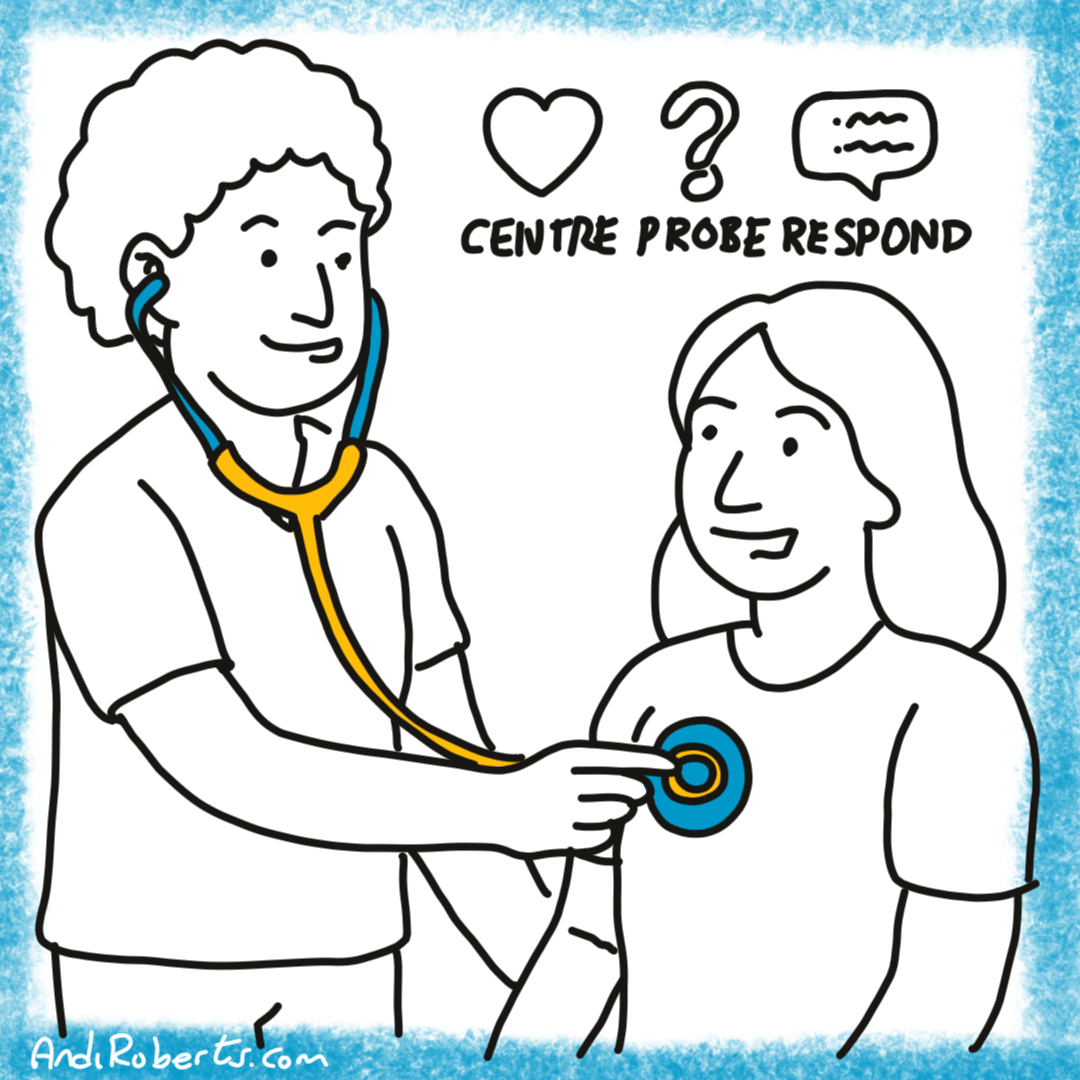In a training course recently, a group of participants from India shared something that landed with weight: “We can’t say no to a customer. And we can’t tell a customer what to do.”
They said it not as a complaint, but almost as a rule, something that simply is. What they voiced is not about personal weakness or a lack of training. It comes from a set of cultural values that have been carried and honoured for generations: respect, deference, relationship, and harmony. These values are beautiful. And yet, when working with global customers, they sometimes collide with a different set of expectations: clarity, directness, and professional authority. The question is not how to train these instincts out of people. The deeper question is: How can customer service professionals hold onto the strengths of their culture, while also stepping into the clarity and authority customers expect?
Why saying “no” feels so difficult
High-Context communication (Hall; Meyer)
In India, communication is subtle. Edward Hall called this high-context culture: where meaning lies not in words alone, but in the silences, the pauses, the way things are phrased. A “no” may be carried in a soft “let me see,” or in a pause long enough to signal the answer. To Indian ears, this protects dignity. But for customers from low-context cultures, such as the US, the UK, and Germany, this indirectness can feel evasive. They expect the word itself: “no.”
Respect for hierarchy (Hofstede; Meyer)
India is also a hierarchical culture, where deference flows upward. Hofstede calls this high power distance. In a service setting, the customer is not just “right”, they are higher in status. To tell a customer what to do is to speak up the hierarchy, something that feels unnatural. But Western service cultures are more egalitarian. Customers expect the representative to be the expert, to lead them through the process with confidence.
The Importance of harmony (Brown & Levinson)
Politeness theory reminds us that every conversation involves protecting dignity or face. A direct “no” risks making the customer lose face (“Your request is invalid”) and the professional lose face too (“I cannot give you what you ask”). To avoid this, refusals are softened or sidestepped. This is not fear. It is fidelity to a relationship. It is an instinct to avoid shame, for both oneself and others. Seen this way, the reluctance makes sense. It is not a flaw. It is the reflection of cultural values that prioritise respect and harmony. The challenge is that global customers often read the same behaviour differently: what is meant as politeness is heard as avoidance.
So the task is not to abandon cultural strengths but to find new ways of holding both: respect and clarity, deference and authority.
Five strategies that empower without betraying your values
1. Say a “Positive No”
A “no” can be an act of care if it points toward possibility. William Ury calls this the positive no: begin with what you affirm, say the “no” clearly, then redirect to what you can offer.
Don’t say: “No, that’s not possible.”
Do say: “I understand why you’d want that. What I can do for you today is…”
Here, refusal is not rejection. It is guidance.
Reflection: When have you softened a no so much that the other person never heard it? What dignity might you preserve by being both clear and kind?
2. Replace Commands with Collaboration
Giving instructions can feel like overstepping. But when you frame it as a partnership, you are not telling the customer what to do; you are walking with them.
Don’t say: “You need to restart your router.”
Do say: “The best next step is to restart your router. Would you like me to walk you through it?”
The authority remains, but the relationship is preserved.
Reflection: How might you reframe authority not as domination, but as accompaniment?
3. Layer empathy with expertise
Research on service recovery shows that empathy changes how limits are received. Customers accept boundaries more readily when they feel heard. The sequence matters: listen first, then guide.
- “I know this has taken longer than expected. To fix it today, the next step is…”
- “I understand your frustration. The fastest solution available is…”
It is not about choosing between compassion and clarity. It is about holding both.
Reflection: In your conversations, do you lean more toward empathy or toward expertise? What would it take to bring them together?
4. Code-switch with awareness
Erin Meyer calls this cultural agility: the ability to flex style depending on who you are speaking with. To a US customer, clarity is kindness. To an Indian customer, subtlety is respect. To a Japanese customer, indirectness signals care.
- US customer: “That option isn’t possible. The best solution is X.”
- Indian customer: “Let’s see what is possible. One option could be X.”
- Japanese customer: “That may be difficult. What we could try instead is X.”
Code-switching is not inauthentic. It is the practice of respect in a global world.
Reflection: Where do you feel most stretched in adapting your style? What values do you want to carry with you, no matter the context?
5. Build confidence through practice
Confidence rarely comes from theory. It comes from experience, from saying the words aloud, from trying in small steps, from noticing that the world does not end when you say no. Bandura called this self-efficacy: belief built through lived success.
Refund refused: “While a refund isn’t possible, I can offer you an exchange or priority service.”
Troubleshooting resisted: “I know this feels inconvenient. The quickest way to get you back online is if we try this step together.”
Every time a phrase is practised, the ground shifts a little. Clarity becomes more natural.
Reflection: What is one phrase you could practise this week until it feels like your own voice?
Five practices if this resonates with you
If these ideas touch something in you, here are five practices to carry into your daily work:
- Notice your instinct. Pay attention to when you hesitate, soften, or defer. Awareness opens possibilities.
- Reframe your role. See yourself not as subordinate to the customer, but as the guide who helps them succeed.
- Borrow and adapt phrases. Collect respectful, clear language from colleagues. Make it part of your voice.
- Start small. Try one strategy in one conversation. Reflect afterwards, not on perfection but on learning.
- Hold culture with care. Respect and harmony are not weaknesses. They are strengths. When paired with clarity, they become powerful tools.
A different possibility
The struggle to say “no” or to guide others is not really about words. It is about the stance we take toward another human being. When service professionals bring together the respect of their culture with the clarity customers need, they are doing more than handling transactions; they are shaping relationships. They step out of the role of servant or authority figure and into the role of partner. To say “no” with respect is not a trick of language. It is the practice of dignity, and it changes the conversation.
Further reading
Erin Meyer (2014) – The Culture Map: A framework for navigating cultural differences, especially in communication and leadership. Shows why some cultures prize indirectness while others expect blunt clarity.
Geert Hofstede (2010) – Cultures and Organizations: Software of the Mind: Explores how values like hierarchy and collectivism shape workplace behaviour across countries.
Edward T. Hall (1976) – Beyond Culture: Introduces high- and low-context communication. Essential for understanding why a “no” in India may sound nothing like a “no” in the US.
Brown, P. & Levinson, S. (1987) – Politeness: Some Universals in Language Usage: Explains how people protect dignity (“face”) in communication, and why refusals are softened in many cultures.
William Ury (2007) – The Power of a Positive No: Practical guidance on saying no without breaking relationships.
Albert Bandura (1997) – Self-Efficacy: The Exercise of Control: Shows how confidence grows from small acts of practice and success.
Tax, S. S., Brown, S. W., & Chandrashekaran, M. (1998) – Customer evaluations of service complaint experiences: Implications for relationship marketing: Demonstrates that empathy and fairness often matter more than outcomes in service recovery.





Leave A Comment